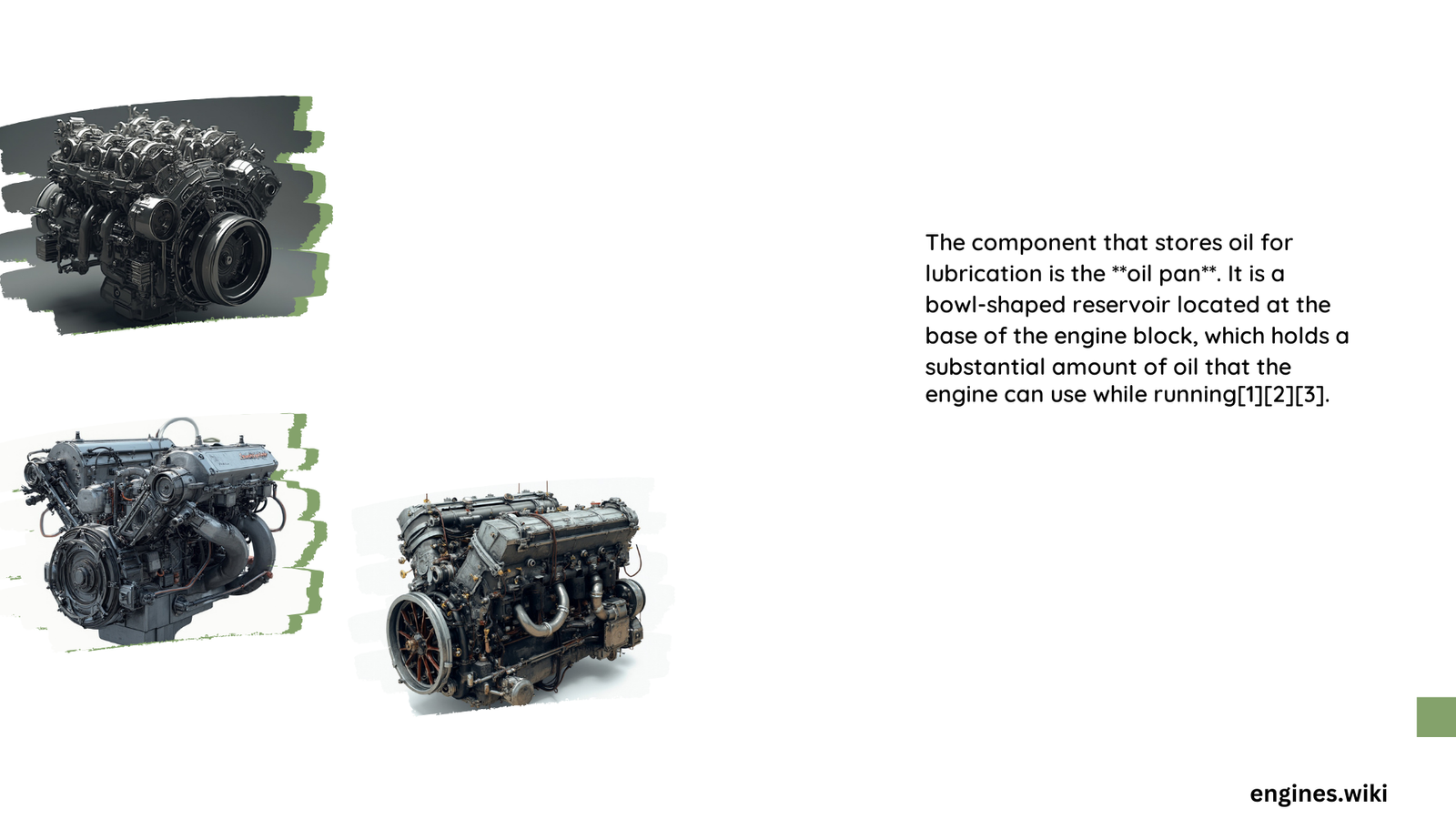The oil pan, also known as the oil sump, is the primary component in vehicle engines that stores oil for lubrication. This crucial part is typically located at the bottom of the engine and serves as a reservoir for engine oil. The oil pan’s design, capacity, and material composition vary depending on the vehicle type and engine specifications. Understanding the role and maintenance of the oil pan is essential for proper engine function and longevity.
What is the Purpose of the Oil Pan?
The oil pan serves several critical functions in the engine:
- Oil Storage: It acts as a reservoir for engine oil, ensuring a constant supply for lubrication.
- Heat Dissipation: The oil pan helps in cooling the oil by increasing its surface area.
- Debris Collection: It collects metal particles and other contaminants that settle at the bottom.
- Oil Level Monitoring: It allows for easy checking of oil levels through the dipstick.
How is the Oil Pan Designed?

The design of the oil pan is crucial for its functionality:
- Location: Typically situated at the bottom of the engine block.
- Shape: Often shallow and wide to maximize oil capacity and surface area for cooling.
- Material: Usually made of steel, aluminum, or cast iron, depending on the engine requirements.
- Capacity: Varies based on engine size and vehicle type, ranging from 4 to 12 liters or more.
What are the Material Choices for Oil Pans?
The choice of material for oil pans impacts their performance and durability:
- Steel:
- Pros: Durable, cost-effective
-
Cons: Heavier, prone to rust
-
Aluminum:
- Pros: Lightweight, excellent heat dissipation
-
Cons: More expensive, can be prone to warping
-
Cast Iron:
- Pros: Extremely durable, good heat retention
- Cons: Very heavy, less common in modern vehicles
How Does Oil Capacity Vary Across Vehicle Types?
Oil capacity varies significantly across different vehicle types:
| Vehicle Type | Typical Oil Capacity Range |
|---|---|
| Sedans | 4 – 6 liters |
| SUVs | 5 – 8 liters |
| Trucks | 6 – 12 liters or more |
Examples:
– Toyota Camry (Sedan): Approximately 4.5 liters
– Honda CR-V (SUV): Approximately 5.5 liters
– Ford F-150 (Truck): Approximately 7 liters
What are the Operational Conditions for Oil Pans?
Oil pans operate under various conditions:
- Temperature Range: From 40°F (4°C) when cold to over 300°F (149°C) during operation.
- Pressure: While not pressurized itself, it’s part of a system operating at 20-80 psi (1.4-5.5 bar).
- Environmental Factors: Exposed to road debris, moisture, and temperature fluctuations.
What are Common Challenges in Oil Pan Maintenance?
Several issues can affect oil pan performance:
- Oil Leaks: Often due to damaged gaskets or cracks in the pan.
- Corrosion: Particularly in steel pans exposed to moisture and road salt.
- Physical Damage: From road debris or improper jacking during maintenance.
- Sludge Buildup: Result of infrequent oil changes or poor-quality oil.
How to Access and Maintain the Oil Pan?
Proper maintenance of the oil pan is crucial:
- Accessing the Oil Pan:
- Jack up the vehicle safely
- Locate the drain plug at the bottom of the oil pan
-
Place an oil catch pan underneath
-
Maintenance Steps:
- Remove the drain plug and allow oil to drain completely
- Inspect the pan for damage or leaks
- Replace the drain plug with a new washer if necessary
-
Refill with fresh oil as per manufacturer specifications
-
Maintenance Costs and Time:
- Cost: $20 to $100+ depending on oil type and labor
-
Time: 30 minutes to several hours
-
Impact of Neglect:
- Increased engine wear
- Overheating
- Potential catastrophic engine failure
What are the Industry Standards for Oil Pans?
While there are no universal standards for oil pan design or capacity, manufacturers adhere to certain practices:
- Material selection based on durability and heat dissipation requirements
- Capacity determined by engine size and vehicle type
- Design optimized for oil circulation and cooling
- Compliance with environmental regulations regarding oil containment
How Does the Oil Pan Contribute to Engine Performance?
The oil pan plays a vital role in engine performance:
- Lubrication: Ensures a constant supply of oil to reduce friction between moving parts.
- Cooling: Helps maintain optimal oil temperature for efficient lubrication.
- Contamination Control: Collects debris to prevent recirculation through the engine.
- Oil Quality Maintenance: Allows for easy oil changes to maintain oil quality.
What Future Innovations are Expected in Oil Pan Design?
The automotive industry is constantly evolving, and oil pan design is no exception:
- Lightweight Materials: Development of stronger, lighter materials for improved fuel efficiency.
- Integrated Sensors: Advanced monitoring of oil quality and level.
- Enhanced Cooling: Improved designs for better heat dissipation.
- Eco-Friendly Options: Biodegradable materials or recycled content in oil pan construction.
In conclusion, the oil pan is a critical component in vehicle engines, responsible for storing and managing the oil essential for lubrication. Its design, capacity, and maintenance significantly impact engine performance and longevity. As automotive technology advances, we can expect to see innovations in oil pan design that further enhance engine efficiency and environmental sustainability.
References:
1. ENGINE OILS AND THEIR FILTERS – Purdue Agriculture
2. Tips for Storing Engine Oil – Green Industry Pros
3. How Long Can You Store Motor Oil? – SVI International, Inc.
